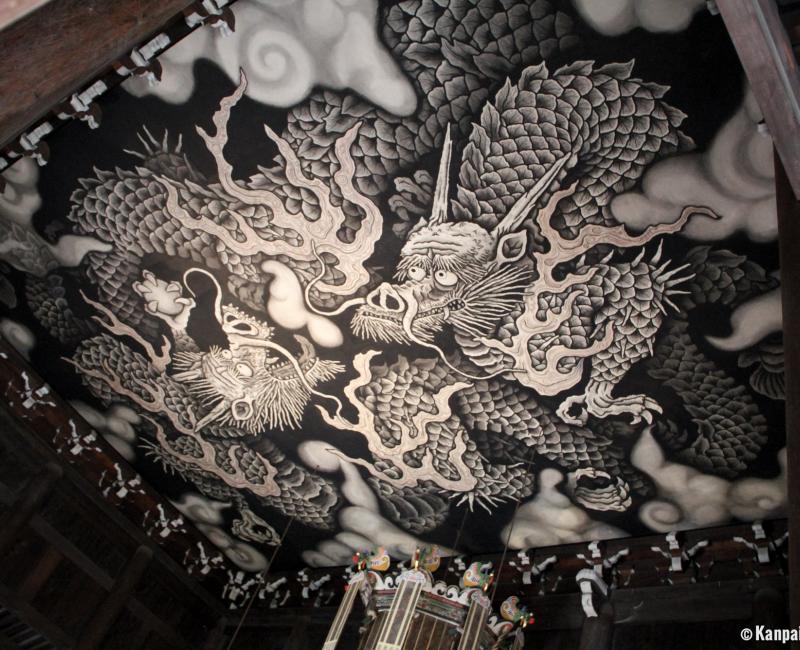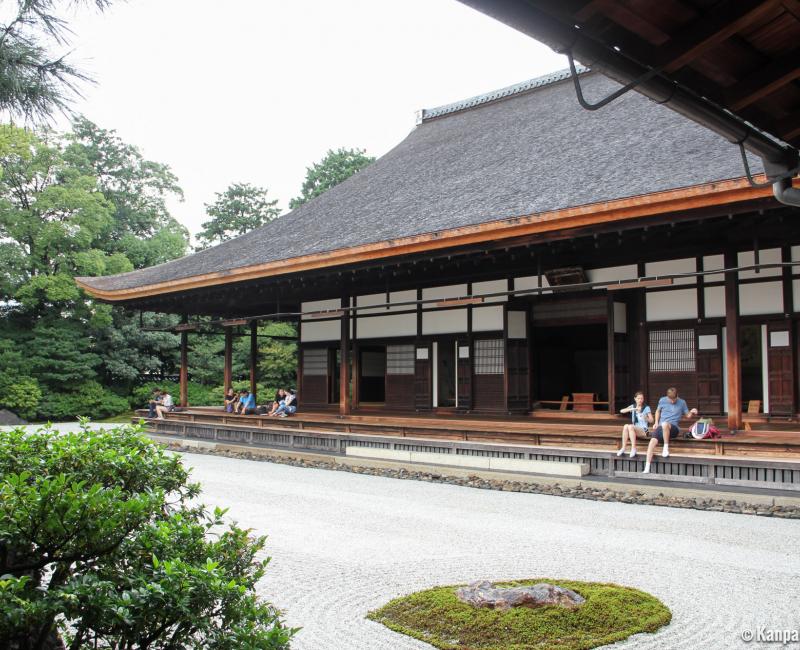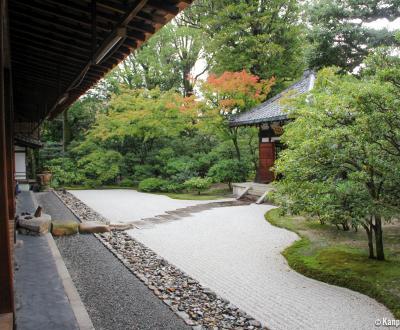Kennin-ji
The Oldest Zen Temple in Kyoto
Kennin-ji is the main temple of the Rinzai branch of Zen Buddhism and is located at the end of Hanamikoji street in the east of Kyoto. Founded in 1202 by influential monk Eisai (or Yosai), it is now part of the Five Mountains network of temples. It is renowned for its wonderful indoor decorative paintings and its perfectly tended gardens.
Kennin-ji temple is a haven of quietness not far from Gion’s touristic effervescence. As a prime location for meditation practice, the temple’s large grounds epitomize Rinzai teachings’ splendors.
A long path, lined with maple trees that turn a beautiful red in autumn 🍁, leads to the core of the complex where visitors can discover two pavilions and three gardens of different styles.

Remarkable traditional paintings
The former kitchen of the monastery is now used as the entrance and displays high ceilings and an intricate architecture of beams and chimneys. Further on, wall paintings and painted folding screens attract visitors' eyes. These very detailed and impressive paintings reveal the talent of their respective authors. Dating back to the Edo period (1603-1868), Sotatsu’ s Wind God and Thunder God Screens are stunning.
The main hall Hatto is naturally home to a Buddha statue, but is more renowned for Koizumi Junsaku’s masterpiece, Twin Dragons, a ceiling painting placed in April 2002 to celebrate the temple’s 800th anniversary. The dragons were drawn with ink on a thick Japanese traditional paper of impressive dimensions: 11.4 meters in width and 15.7 meters length, which is also the surface that can cover 108 tatami mats. It took two years to the artist to complete this artwork and he had to work in a disused elementary school gym in Hokkaido. Koizumi Junsaku first created the picture on a smaller scale, then translated it on its actual size with stunning optical effects and reliefs. From below, the painting looks smaller and one of the dragons’ tails seems protruding from the paper, as if moving like a real life creature.
The main pavilion also features fusuma sliding doors decorated with paintings that are the work of only one artist: painter Kaiho Yusho, a great painter of the Azuchi-Momoyama period at the end of the 17th century. Icing on the cake, pictures are allowed all along the visit course.

A contemplative stroll among the gardens
The contemplation path continues with views on green spaces:
- The great karesansui dry garden Daioen,
- The square ○△□ garden, characterized by its central bush, and,
- The second square court Choontei composed of three huge stones, moss and maple trees.
Convenient seating is arranged along the walking course to allow visitors a leisurely contemplation of the gardens’ beauty at any angle.
Kennin-ji temple, surprisingly less popular than the other temples, is still preserved from mass tourism. It is an excellent place to go for amateurs of tranquility and harmony. Moreover, its access is easy as it is located close to Kyoto’s historical center.

